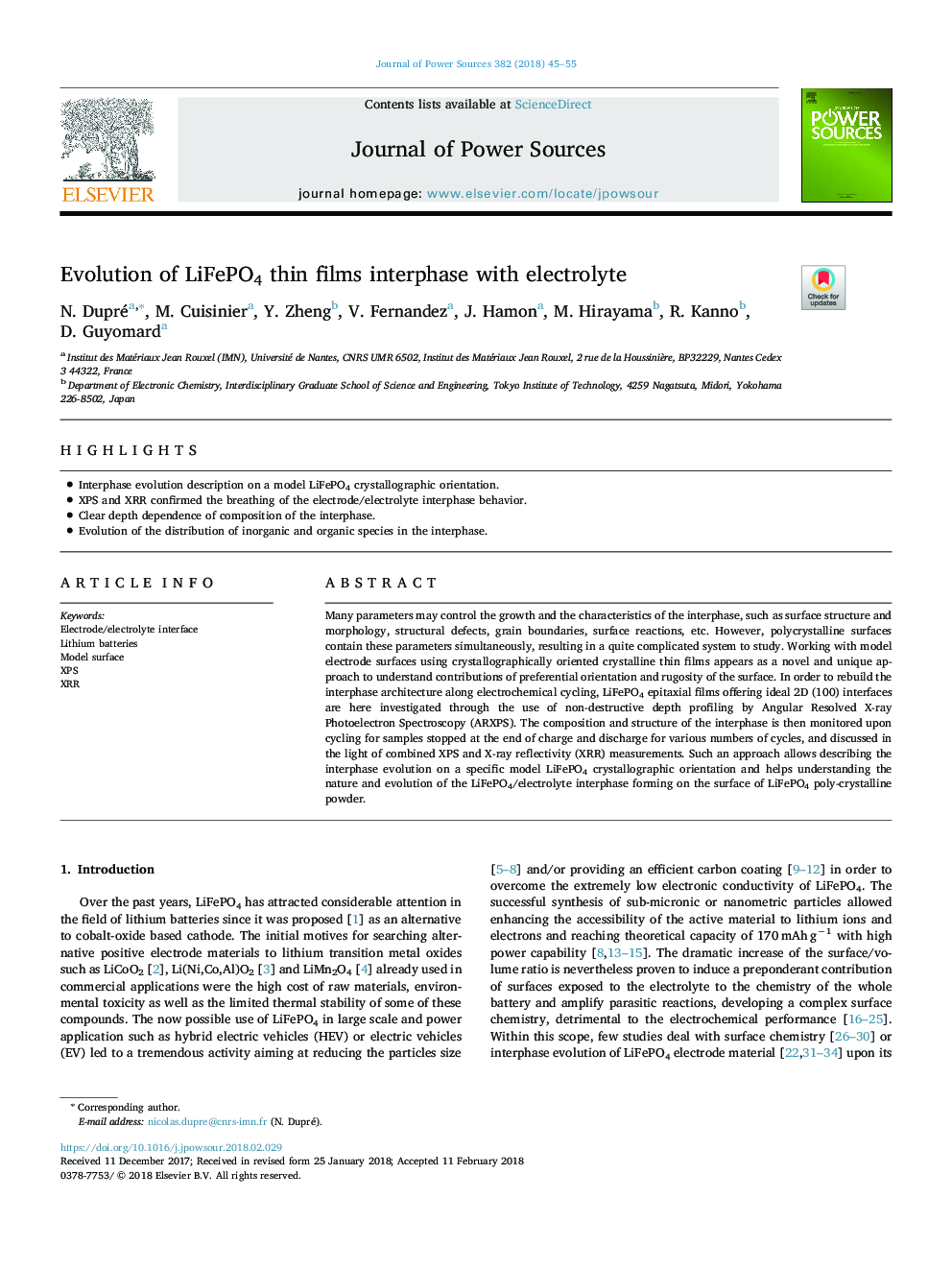| Article ID | Journal | Published Year | Pages | File Type |
|---|---|---|---|---|
| 7725450 | Journal of Power Sources | 2018 | 11 Pages |
Abstract
Many parameters may control the growth and the characteristics of the interphase, such as surface structure and morphology, structural defects, grain boundaries, surface reactions, etc. However, polycrystalline surfaces contain these parameters simultaneously, resulting in a quite complicated system to study. Working with model electrode surfaces using crystallographically oriented crystalline thin films appears as a novel and unique approach to understand contributions of preferential orientation and rugosity of the surface. In order to rebuild the interphase architecture along electrochemical cycling, LiFePO4 epitaxial films offering ideal 2D (100) interfaces are here investigated through the use of non-destructive depth profiling by Angular Resolved X-ray Photoelectron Spectroscopy (ARXPS). The composition and structure of the interphase is then monitored upon cycling for samples stopped at the end of charge and discharge for various numbers of cycles, and discussed in the light of combined XPS and X-ray reflectivity (XRR) measurements. Such an approach allows describing the interphase evolution on a specific model LiFePO4 crystallographic orientation and helps understanding the nature and evolution of the LiFePO4/electrolyte interphase forming on the surface of LiFePO4 poly-crystalline powder.
Related Topics
Physical Sciences and Engineering
Chemistry
Electrochemistry
Authors
N. Dupré, M. Cuisinier, Y. Zheng, V. Fernandez, J. Hamon, M. Hirayama, R. Kanno, D. Guyomard,
